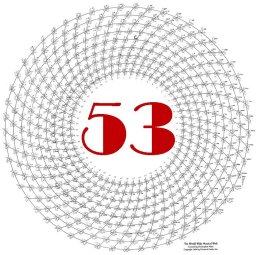India and Musical Imperialism
The syllable OM, which is the imperishable Brahman, is the universe. Whatsoever has existed, whatsoever exists, whatsoever shall exist hereafter, is OM. And whatsoever transcends past, present and future, that also is OM. –Mandukya Upanishad from the Vedas
There is much more discussion about the Indian musical tradition in a later chapter, but in this chapter we talk about the fact that India has the richest heritage of tuning of any ancient culture in the world. The harmonic complexity of the pitches they derive from the “Om” or root note is unmatched anywhere. As just one example, here is a 22-note-to-the-octave unequal sruti, which is the basis of countless five, six, seven and nine-note scales. These 22 pitches, all of them based on the natural harmonics in relation to the home pitch, are the basis for all their ancient scales (or modes). The modes the musicians employ just use five or seven or nine notes from these 22 notes to create a scale.
The 22-unequal-note-to-the-octave srutis are incompatible with 12-eq tuning, so when the Brits colonized India, they also colonized their music, gave them 12-equal harmoniums, and almost destroyed the greatest harmonic system ever developed.
If you would like to learn more about this chapter, “India and Musical Imperialism,” you can buy the entire book, The Grand Unified Theory of Music, in pdf form plus the full website for $25 with hundreds of embedded musical examples.
A free introduction to what The Grand Unified Theory of Music offers is on this website and includes both text and a few musical examples from each webpage. If you would like to learn more about this chapter and the full contents of this entire e-book, you can buy The Grand Unified Theory of Music for $25, with hundreds of embedded musical examples of scales and chords from all over the world — and ideas for how to set up your computer system —
HERE.
You’ll get a personalized password you can use to see the entire e-book. Inside the full book, you will also get a link to the complete pdf file of this e-book, which you can read on your Kindle or similar device. The links to the hundreds of mp3 sound files – the same ones you can hear on the website — will also be included. This is “Version 1.0” of The Grand Unified Theory of Music. Because it is an e-book, additions, corrections and improvements in the sound may be added at any time. The Grand Unified Theory of Music is Copyright © 2018 by Christopher Mohr. All rights reserved.
One person per password. Sharing this password with others is a violation of copyright. Do not allow others to use your password or link to the pdf file!
